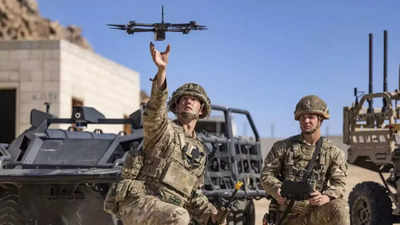In a recent disclosure, it has been revealed that Russia’s Lancet drones, known for their precision strikes and autonomous operation, are powered by advanced AI technology originating from the United States. This revelation sheds light on a complex web of technological collaboration between nations, raising concerns about global security dynamics.
Details of the Revelation:
Sources within the intelligence community, speaking anonymously, have disclosed the extent of collaboration between Russia and the United States in enhancing the capabilities of Lancet drones. These drones, characterized by their agility, stealth, and deadly accuracy, have long been a focus of concern for Western military strategists. However, the integration of US AI technology has significantly heightened these concerns.
Implications for Global Security:
Experts warn that the fusion of Russian hardware with American software could potentially shift the balance of power in conflicts worldwide. This revelation comes amidst heightened tensions between Russia and the United States, highlighting the intricate nature of international technological dependencies and their impact on traditional notions of security and sovereignty.
Motivations Behind Collaboration:
While the exact details of the technological transfer remain classified, analysts speculate on the motivations driving such collaboration. Some suggest strategic maneuvering by Russia to exploit loopholes in export controls, while others point to profit incentives within certain factions of the US. This raises questions about the prioritization of profit over security concerns in the arms trade.
Challenges and Responses:
Governments are grappling with the implications of this revelation, prompting calls for stricter oversight and transparency in regulating the transfer of sensitive technologies. Policymakers seek to prevent similar instances of technology transfer that could undermine national security interests, highlighting the need for vigilance, cooperation, and responsible stewardship of technology in the digital age.
Multiple-Choice Questions (MCQs):
- What has been revealed about Russia’s Lancet drones?
a) They operate autonomously without any human intervention
b) They are powered by advanced AI technology from the United States
c) They are known for their large size and payload capacity
d) They are primarily used for surveillance purposes
Answer: b) They are powered by advanced AI technology from the United States - What are the concerns raised by experts regarding the integration of US AI technology into Russian drones?
a) Decreased agility and accuracy
b) Enhanced stealth capabilities
c) Potential shift in the balance of power in global conflicts
d) Reduced dependence on technological advancements
Answer: c) Potential shift in the balance of power in global conflicts - What motivates the collaboration between Russia and the United States in enhancing drone capabilities?
a) Strategic maneuvering to exploit export control loopholes
b) Altruistic intentions for global peacekeeping
c) Environmental concerns related to drone technology
d) A desire for cultural exchange and technological cooperation
Answer: a) Strategic maneuvering to exploit export control loopholes - What response has been prompted by the revelation of Russian Lancet drones powered by US AI?
a) Calls for stricter oversight and transparency in regulating technology transfer
b) Expansion of arms trade without any regulations
c) Promotion of isolationist policies by nations
d) Emphasis on increasing military spending without considering technology
Answer: a) Calls for stricter oversight and transparency in regulating technology transfer
